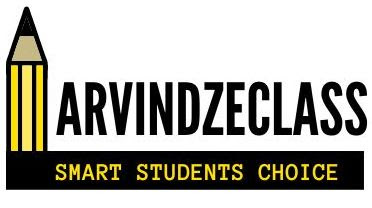What is Communication?
Communication is a way to express your thoughts and feeling to someone and it comes under soft skill. Not only human beings but also animals do communication using body movements and using different sounds. There are three types of communications:
 |
| Type of Communication |
What are the different types of communication?
1) Verbal Communication: In this communication message is exchanged by language using oral or written form. Language is the most important in this Communication. This communication is used in face to face conversation, discussion, interview, calls, letters, notes, emails etc.
--------------------------------------------------
Chapter - Communication Skills III
Features of a good Verbal Communication:
1) People should have good listening skill otherwise it becomes one way communication.
2) There should be use of correct grammar in oral and written form so that the correct message reaches to the audience.
3) Voice modulation makes a deep impact in the audience. On the other hand formatting and punctuation convey message more effectively to the reads.
4) Good vocabulary can boost the message in verbal communication.
2) Non-Verbal Communication: In this communication language is not used unlike in verbal communication and message is passed using body movements, facial expressions, and postures. It is totally a wordless and unintentional even people don’t aware of it that they are sending a message.
Features of a good Non-Verbal Communication:
1) There is no use of word. Only body movements, facial expression, and gestures are used to convey a message. It is natural.
2) This communication has different meanings in different culture.
3) It shows feeling and attitude to others.
3) Visual Communication: In this communication picture is used to convey a message as “a picture is worth a thousand words”. The message is communicated using visual aids such as signs, drawings, presentation etc.
Features of a good Visual Communication:
1) In picture essential message should be direly compared to texts.
2) Different color in picture can have a good impact on audience.
What is Communication Cycle?
When we share message, the message passes through many stages, and eventually reaches to the receiver. In communication every stage is equally important as communication is a two way process.
 |
| Communication Cycle |
2) Message: The message is the thought that is expressed using a communication method.
3) Encoding: This is the process in which message is transformed into a verbal, non-verbal or visual form so that it can go to the receiver. Before encoding message you should keep in your mind the audience’s culture and their background.
4) Channel: The channel is the media through which message is transmitted from sender to a receiver. In communication different channels have different strength and weakness. There could be any communication channel:
Verbal: Speech, Face-to-Face Meeting, Telephone, Video conference, Interview, E-mail, Letter, Report
Non-Verbal: Body Movement, Face Expression, Gesture
Visual: Video, Picture, Chart
5) Decoding: In encoding message was transformed into a form so that receiver can understand the message. On the other hand in decoding a receiver reads the message and translates its meaning. There could be errors if the receiver doesn’t have the enough knowledge to translate the message.
6) Receiver: A receiver could be a person or a audience to whom the message has been delivered by the speaker. Sender is the one end of the thread. On the other hand a receiver is the second end of the thread. The communication is only successful when message is delivered correctly to the receiver.
7) Feedback: Feedback is the reaction that can be verbal or non-verbal. The audience will give a feedback after understanding the message. The speaker should give attention to the feedback, as it can give assurance that audience has understood the message.
There are two types of feedback:
i) Positive feedback tells that message was delivered correctly and it motivates to do better.
ii) Negative feedback tells where needs improvement, so next time perform better.
What are the factors affecting perspectives of communication?
1) Language: Language plays an important role in communication. Both sender and receiver should have a common language. If both don’t have same language then they wouldn’t be able to understand each other.
2) Environment: Environment has a direct effect on perspectives of communication. If the environment in which communication takes place is noisy, over-crowded, and smelly, it may affect the process of communication.
3) Visual Perception: Visual perception can change the meaning in communication which depends on our past experience in life. Same picture can have many meaning for different people.
4) Feeling: Feeling can interpretate a sentence in a different way. People don’t see the things as they are in stress, in anger and take it’s the meaning as they want.
5) Culture: Culture provides a background for communication. Cultural difference causes behavior and personality difference like body language, thinking which leads to miscommunication. For example eye contact is important in one culture, but it is considered as rude in other culture.
6) Personal Factors: Personal factor can also lead to misunderstanding between sender and receiver. These factors includes the life experience, emotions, and attitude.




No comments:
Post a Comment